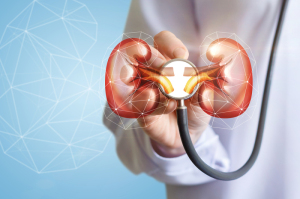by
Lauren Dubinsky, Senior Reporter | September 07, 2017

Could also test new
anti-scarring treatments
Researchers at St. Michael’s Hospital in Toronto recently made the discovery that MR imaging can be used to measure kidney damage and predict the organ’s future function.
In a study published in the
Clinical Journal of the American Society of Nephrology, the team used an MR test called an elastogram to measure kidney scarring in 17 individuals who underwent kidney transplants.
“We think that our MR test would be a useful add-on test because it estimates scarring severity in the entire kidney, rather in the very small piece of the kidney that is sampled by the biopsy,” Dr. Darren Yuen, a transplant nephrologist and scientist at St. Michael’s, told HCB News.



Ad Statistics
Times Displayed: 46286
Times Visited: 1407 MIT labs, experts in Multi-Vendor component level repair of: MRI Coils, RF amplifiers, Gradient Amplifiers Contrast Media Injectors. System repairs, sub-assembly repairs, component level repairs, refurbish/calibrate. info@mitlabsusa.com/+1 (305) 470-8013
Needle biopsies are the current standard for evaluating kidney scarring, but the patient is required to take pain medication and take a day off from work and the procedure can also result in bleeding. The MR elastogram test can do that without having to go inside the body.
It maps the stiffness of kidney tissue in order to determine if scarring is present. Diabetes, high blood pressure, and kidney transplant rejection cause scarring, which is irreversible and can eventually lead to kidney failure.
The study found that the MR elastogram test yielded comparable results to a kidney biopsy, and was also able to detect the amount and location of the scarring throughout the entire organ. It also found that kidney stiffness predicted how well the kidney would function a year after the MR exam.
The test to measure stiffness relies on generating motion in the kidney and assessing the reaction of the tissue. Currently, that can only be done in a repeatable numerical and accurate way with MR and ultrasound.
“MR has shown superiority over ultrasound in accuracy of the test in measuring scarring in other organs besides the kidney, especially the liver, so we thought it would be better to use MRI for kidneys,” said Dr. Anish Kirpalani, the study’s lead author and radiologist and scientist at St. Michael’s.
MR would not replace biopsies, but it could be used as a supplemental test to provide a more comprehensive understanding of a patient’s kidney function, according to Yuen. With the MR test, physicians can gather information on patients whose risk of biopsy is too high to undergo the procedure.
The test can also be used to test new anti-scarring treatments. There are currently no anti-scarring drugs on the market because it’s difficult to rationalize performing multiple kidney biopsies for a pharmaceutical trial.
Back to HCB News

